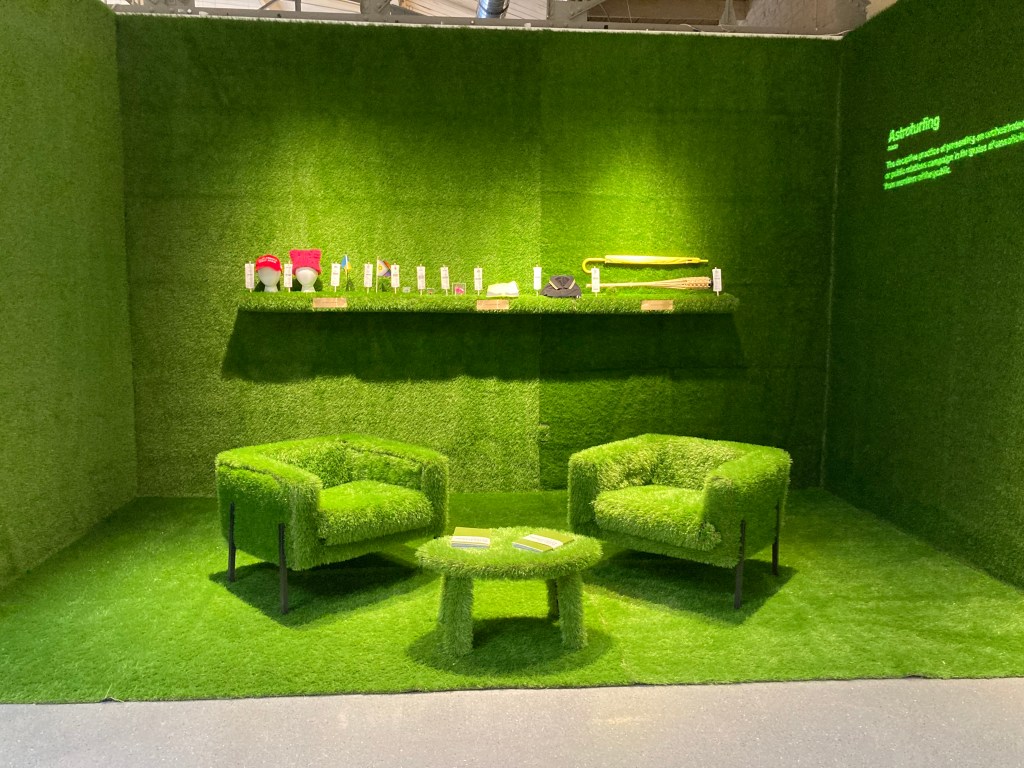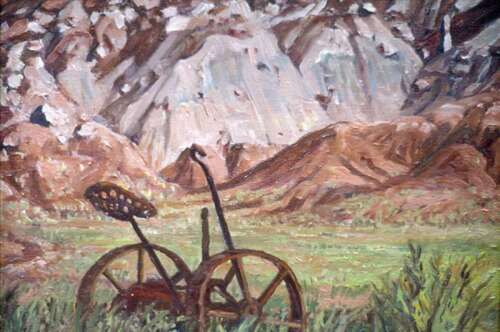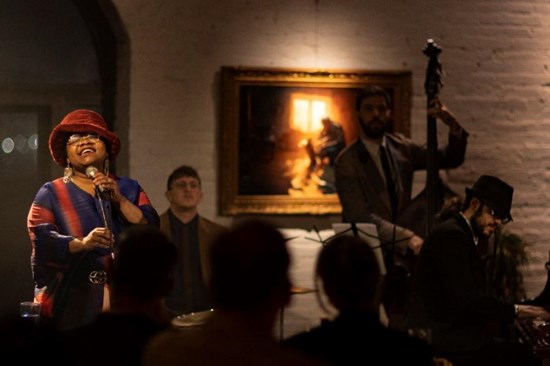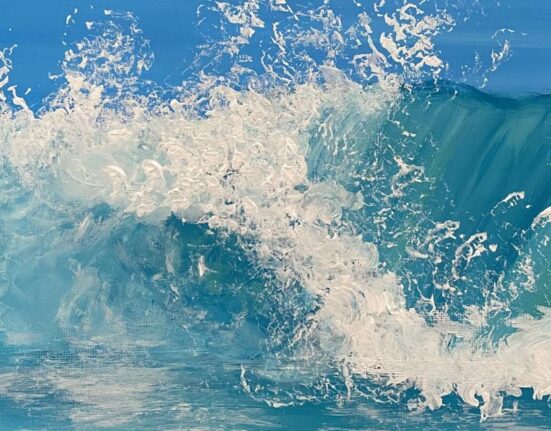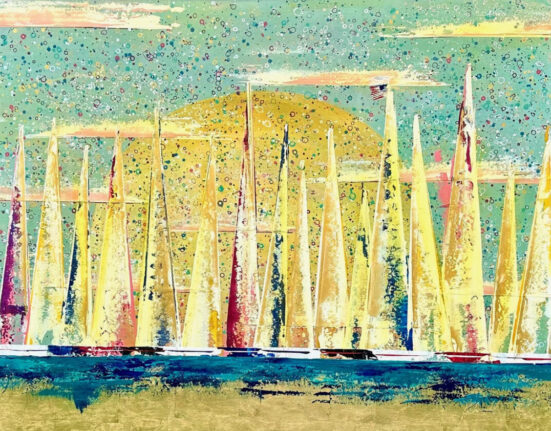Brian Morgans’ “Awareness to Action” brings attention to “astroturfing,” the practice of using online group responses to market products or causes. Ray Mark Rinaldi, Special to The Denver Post
There is something invigorating about seeing the exhibitions of student work that college art galleries present at this time of year. The air is full of optimism, even though all that eager talent that is about to graduate faces an uncertain career path. Artists never have it easy.
I pop into these exhibitions all the time, though I rarely write about them. As exhibitions go, they are somewhat artificial — not built around a curatorial idea, but instead, the academic calendar. Every student who graduates gets to partake at the end of their final semester; in a sense, students pay for the privilege of showing their work with their tuition and fees.
But they are always revealing. Want to know what the next generation is obsessing about? The answer is on the walls and floors of the room, manifested in the paintings, sculpture, video, photos and, increasingly, the interactive installations that students make.
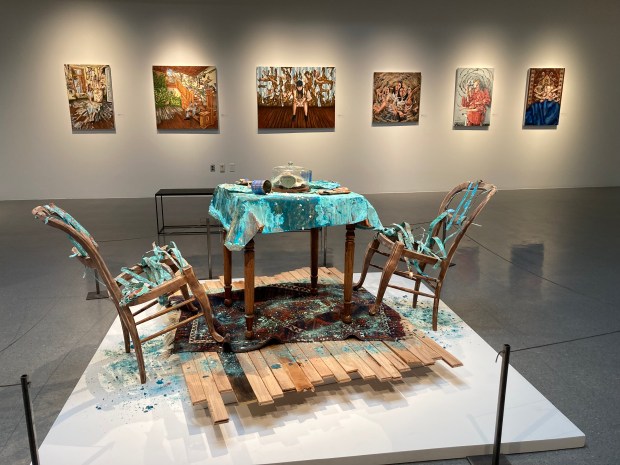
And sometimes, these shows surprise you. That is the case with the current exhibition at the Center for Visual Art, which features adventurous work from 23 bachelor-of-fine-arts students in Metropolitan State University’s studio art and communication design programs. It has an abundance of riches, a testament not only to the participants, but to the programs themselves and the teachers who run them as well.
As far as college galleries go, CVA is among the best. When it is not showing student offerings — and that is most of the time — it is a showcase for the work of professional artists from around the world. The main goal is to make sure MSU students see the kind of art that is resonating globally. It is an educational tool.
But the exhibitions are also available to the local community, and always for free, making the CVA a rich resource for both the school itself and the region as a whole. It is a top gallery here and nearly always a source of both entertainment and inspiration.
That is a good way to describe the BFA show now on the walls. There are visceral pleasures for sure — works that are colorful, challenging and sometimes humorous. But most of the ideas are focused and fully explored.
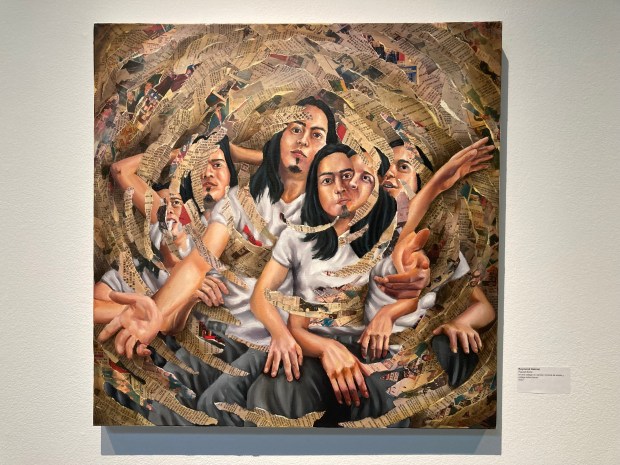
It is also visitor-friendly, with plenty of text to help viewers understand what exactly is going on with the work, which is, at times, highly conceptual. Each student provides a long artist statement with a generous amount of context — social, material, technological — that aids in appreciating the fare.
So, visitors do not just get the pleasure of seeing the whimsical astroturf-covered living room furniture in Brian Morgans’ installation titled “Awareness to Action,” they also get four full paragraphs, written by the artist, explaining how the piece draws attention to the concept of “astroturfing” — “a term that refers to when a group creates the appearance of grassroots support for a cause or idea” when that support may not actually exist.
Morgans takes that theoretical concept and makes it real and immersive. Visitors can sit in the chairs and feel the fake grass under their feet. It’s an invitation to fully contemplate his ideas.
Consumerism is a hot topic at this show, and so, not surprisingly with this generation of artists, is climate. Kayli Cottonwood’s “What Have We Lost?” looks at the concept of “climate grief” or, as she writes, “the feeling of loss associated with the constant destruction of the planet.” Her piece transforms a small tree, which has died, into something more like a human skeleton.
Each branch and twig is separated from the trunk and then joined back together using brass wire, as if they were bones. She compares her process to that of a mortician, preparing a corpse so that it can be put on display and mourned publicly. The tree is both beautiful and sad.
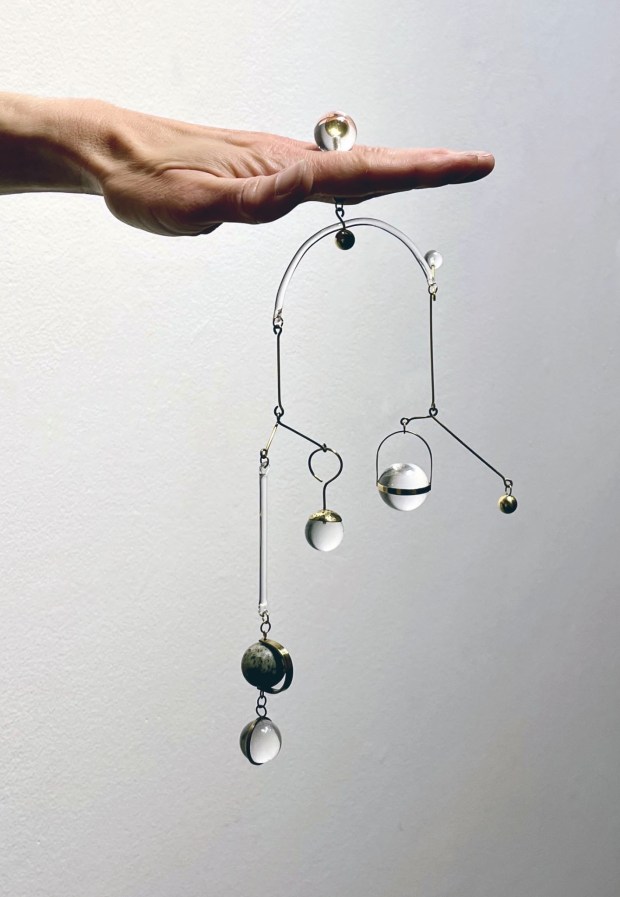
There are also pieces about identity, including Raymond Gabriel’s portraits of people made from a combination of oil paint and collage. His pieces mix representational paintings of human figures with applied fragments of magazines, documents, letters and photographs to show how our experiences and personal histories are “constantly evolving and adding depth to our essence.”
Such existential questions abound. Erica Rawson’s “I Moved Ground and Dust to Keep You Here” explores how everyone and everything is in a constant state of decay, no matter how hard we try to preserve things. “Food spoils, skin sheds, materials wither without maintenance” as she explains in her text.
The piece is a full table and chairs set up on a platform in the center of the gallery floor. Everything is in ruins — the chairs are torn up, the plates and cups tumbled over. To drive home her point, she has left a plate of fruit rotting on the table. It is a jarring and effective move.
Ananda Voecks uses jewelry making as a venue for expressing identity. She has, as she explains, mobility challenges and chronic pain, but has for the past decade participated in aerial dance, “where the constraints of gravity on my joints dissolve.” The dance alleviates her suffering.
As well, it inspires her line of rings, necklaces and earrings that are constructed to represent that apparatus of aerial acrobatics. The pieces mirror the ropes, hoops and trapezes of gymnasts and dancers, but with elegant, precious stones incorporated. They are modern and sleek but also rich with meaning.
That sums up the strength of this show overall. The topics may be obvious for a group of twentysomethings in the present decade — gender, game-playing, activism, the plight of Indigenous people are also on the agenda — but they are rendered thoughtfully and with impressive, youthful energy.
It will be interesting to watch, as the years go by, the progress of this talented crop of artists as they face the realities of an economic system that values the contributions of artists but rarely wants to pay them what they are worth. Like I said, it won’t be easy.
IF YOU GO
The Spring 2024 MSU Denver BFA Thesis Exhibition continues through May 10 at the Center for Visual Art, 965 Santa Fe Drive. It is free. Info: 303-615-028 or msudenver.edu/cva.

